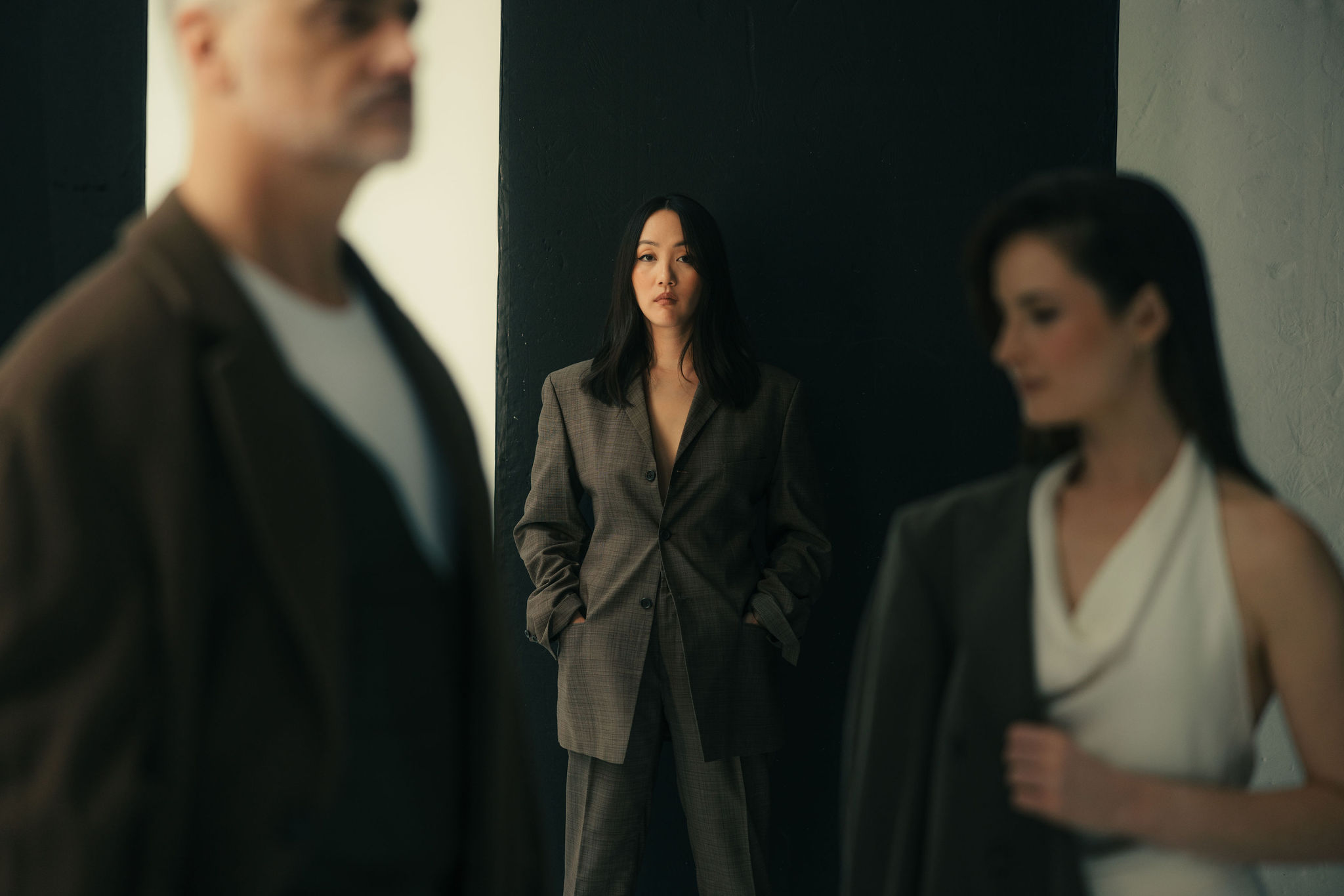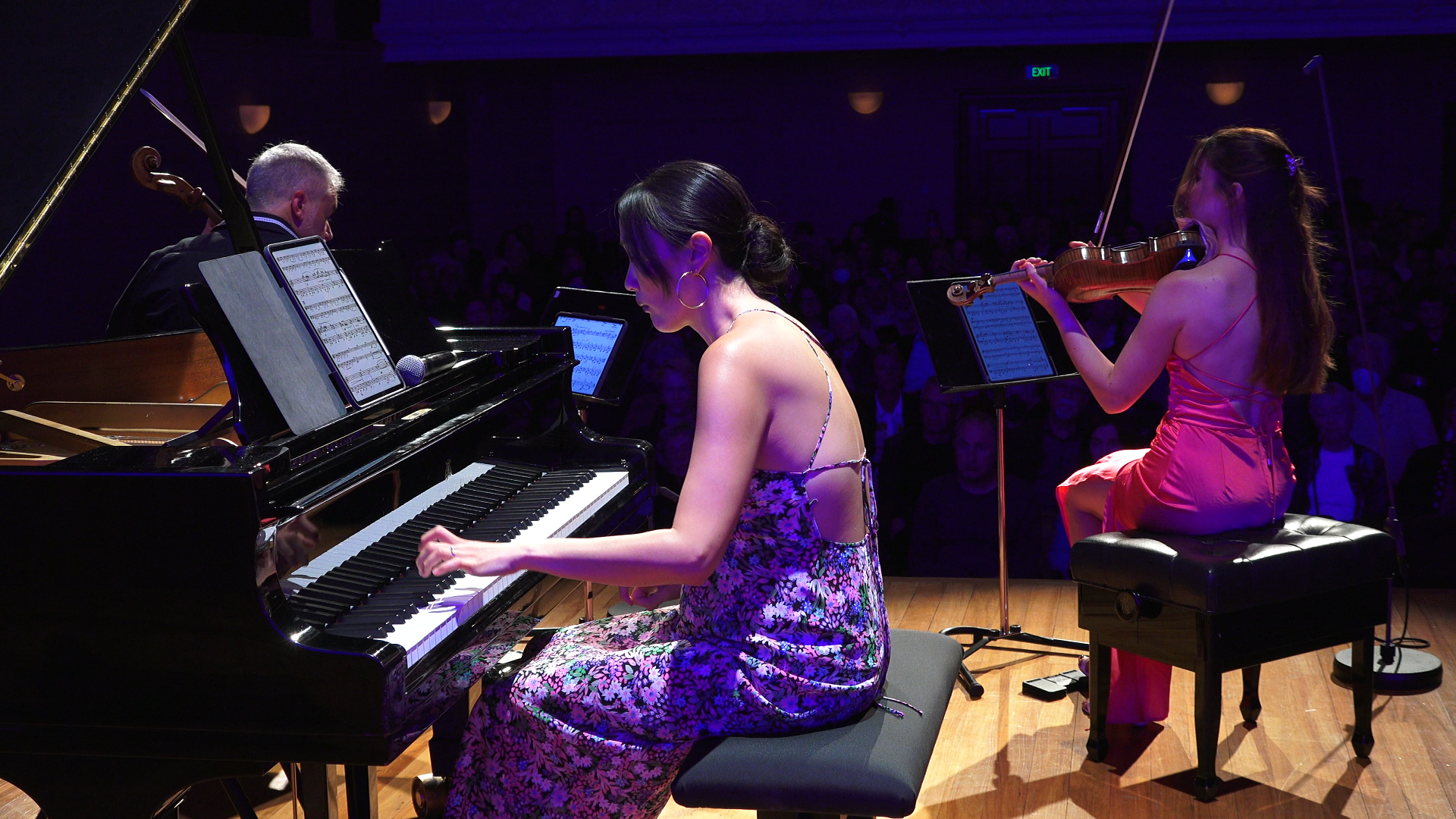NZTRIO LOFT SERIES 2016
25sep5:00 pmNZTRIO LOFT SERIES 2016GLOW: Performance 1
Event Details
LOFT 2: GLOW Zhou Long (China/USA): Spirit of Chimes Gareth Farr (NZ): Forbidden Colours Gao Ping (China): New Commission with guzheng (featuring international guzheng
Event Details
LOFT 2: GLOW
Zhou Long (China/USA): Spirit of Chimes
Gareth Farr (NZ): Forbidden Colours
Gao Ping (China): New Commission with guzheng (featuring international guzheng player Xia Jing)
***
Rachmaninov (RUS): Trio Élégiaque No 2 in d minor, Opus 9
The second concert in the NZTrio LOFT Series, GLOW is lustrous in its exoticism and vibrancy. Zhou Long’s Spirit of chimes conjures the translucent sounds of ancient Chinese instruments, while Gareth Farr’s Forbidden Colours shimmers and soars. Gao Ping’s new commission for NZTrio, in which the trio will be joined by international expert guzheng player Xia Jing, inspires the notion of sending thoughts and wishes into the sky, and Rachmaninov’s Trio Elegiaque No. 2 in d minor, Opus 9 in all its fervour and fullness, is rich in bold hues.
NZTrio’s 3-concert Loft Series features new commissions and exciting collaborations. Expect an intimate setting, great acoustics, top calibre talent, tasty cocktails, and good company.
LOFT 1: ZOOM – 12th June 5pm & 14th June 6:30pm
Musto • Watson • Carter • Zemlinsky
LOFT 3: FLARE (with Simon O’Neill) – 13 Nov 5pm & 15 Nov 6.30pm
Kahn • Bach • Palmer (NZ) • Mahler • Strauss
BOOKING INFO
Tickets for GLOW: $50/Adult, $25/Student – BOOK NOW
NZTrio will perform GLOW on two nights: Sunday 25th Sept 5pm, and Tuesday 27th Sept 6:30pm
Time
September 25, 2016 5:00 pm(GMT+00:00)
Location
Loft at Q
Organizer
Programme Notes
Zhou Long (China; b. 1953): Spirit of Chimes (2003), c.- 13’
Chinese born American composer, Zhou Long is known mostly for his orchestral, chamber and vocal works that have been performed throughout the world. Mr. Zhou studied piano as a child and later studied composition with Wu Zu-qiang at the Central Conservatory of Music in Beijing from 1977–83. He then studied composition with Chou Wen-chung and Mario Davidovsky at Columbia University, where he earned his DMA in 1993.
Among his honours are a Grammy Award (1999, for the recording on Teldec of Words of the Sun), the Academy Award in Music for lifetime achievement from the American Academy of Arts and Letters (2003), and the Pulitzer Prize for Music (2011, for Madame White Snake). He has also received fellowships from the American Academy of Arts and Letters, the Guggenheim Foundation, and the Rockefeller Foundation.
Zhou Long writes: ‘Spirit of Chimes was inspired by the sounds of chime-stones, bone-whistle, and chime-bells from ancient China. Although early Chinese music (pre Tang Dynasty) has disappeared, I can still imagine the real sound of ancient instruments. I translated my impression of this sound into a piano trio in the hope that my music can give new life to ancient chimes.’
Gareth Farr (NZ; b. 1968): Forbidden Colours, c. – 10’
Gareth Farr studied composition and percussion performance at the University of Auckland and later at Victoria University in Wellington where the characteristic rhythms and textures of the Indonesian gamelan rapidly became hallmarks of his own composition. Farr continued with postgraduate study at the Eastman School of Music in Rochester, New York, and after returning to NZ at the age of 25, Farr was appointed composer-in-residence by Chamber Music New Zealand, the youngest-ever composer to hold that position.
His music has been heard at, or especially commissioned for high-profile events including the 50th anniversary of the New Zealand Symphony Orchestra, the opening of the Museum of New Zealand Te Papa Tongarewa, and the 2000 Olympic Games in Sydney.
About Forbidden Colours, Gareth writes: ‘I became intrigued by a phenomenon called ‘forbidden colours’ – unseeable by the human eye because their light frequencies automatically cancel each other out. Try to imagine reddish green — not the dull brown you get when you mix the two pigments together, but rather a colour that is somewhat like red and somewhat like green. This colour exists, but we can’t see it.
The piece establishes itself as a blurry, impressionistic texture – but soon, things start popping into focus, and then sliding away again out of view. I have tried to create the musical equivalent of when you have to strain your eyes to make something out – to even ascertain if you’re looking at anything at all, or if it’s just a figment of your retinas.’
Gao Ping (China): Feng Zheng (new commission with guzheng) – 15’
i. Still Clouds
ii. The Breeze
iii. Breaking the Air
iv. Broken Line
Gao Ping writes: ‘The ancient Chinese invented the kite. Being made of paper and resembling the shape of a hawk, it was originally called “the paper hawk”. Aside from being a favourite pastime and exercise activity in China, there is another pleasure in flying a kite that has been lost to modern times: the sounds it makes in the air. In ancient times, a bamboo tube was installed at the tail of the kite which made a Zheng-like sound when wind passed through it. Therefore, it is also called Feng Zheng (Wind Zheng) a term that is commonly used now. It is regrettable that such an enchanting feature is no longer in existence. However, a Zheng playing among the clouds can be still well imagined!
Kites used to be flown often in the Qingming festival which is a time the Chinese pay respect to their deceased family members and their ancestors. The kite is the carrier of their best wishes to the dead. The spiritual yearning in addition to the rigorous physical activeness gives kite flying a feeling of tenderness that is also robust and healthy.
My “Wind Zheng” is dedicated to a dear friend who is no longer with us, Jack Body, the great New Zealand composer. I have entrusted my emotions for Jack to the wings and sounds of the kite. A motive made of Jack’s name (jACk BoDy)) appears in the beginning and the end of the piece. Is it possible that Jack would meet my free drifting kite somewhere?’
Gao Ping is a pianist-composer, born in Sichuan province, known for evocative textures and piano vocalization, and is the receipient of high musical honors. Visit www.gaoping.org/biography for more details.
INTERVAL
Sergei Rachmaninov (RUS; 1873 – 1943): Trio Élégiaque No.2 in D minor (1893), c. 45’
i. Moderato
ii. Quasi variazione: Andante – Allegro – Lento – Allegro scherzando – Moderato – L’istesso tempo – Allegro vivace – Andante – Moderato
iii. Allegro risoluto
The musical world was rocked on 25 October, 1893 when Tchaikovsky fell victim to the cholera epidemic in St. Petersburg – and none more so than Rachmaninov, who had been tremendously fond of his mentor. Although Tchaikovsky was no longer teaching at the Moscow Conservatory when Rachmaninov came through, he still headed the examinations board, and had picked the younger composer out for special attention by giving him his very first paid commission (the two piano pieces Op. 1). Rachmaninov had written his first trio élégiaque, his graduation piece in 1892, in tribute to Tchaikovsky – never imagining that this second trio élégiaque would give the true meaning to the words. He began it the same evening of Tchaikovsky’s death, dedicating it ‘To the memory of a great artist’ – and within two months it was done.
It’s a huge, grand and passionate work, written on a much larger scale than his first trio, beginning with a movement in perfect classical sonata form – also a grief-laden lament for Tchaikovsky, in that opening note from the cello. The second movement, Andante, is a variation movement following Tchaikovsky’s own model in his trio Op. 50, with eight variations following the main theme and Rachmaninov very much asserting his brilliance at the piano; and the finale is an outburst of passion and energy when suddenly the strings bring in an echo of the lament at the beginning – and that magical descending phrase brings the trio full circle.
Programme note by Charlotte Wilson – abridged.


